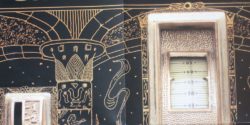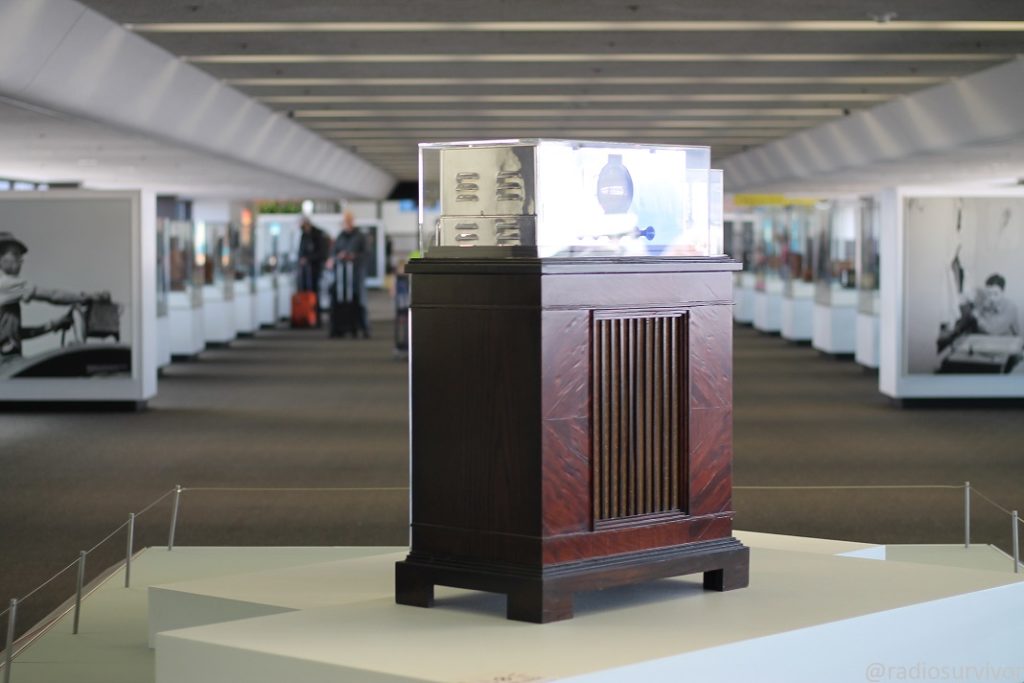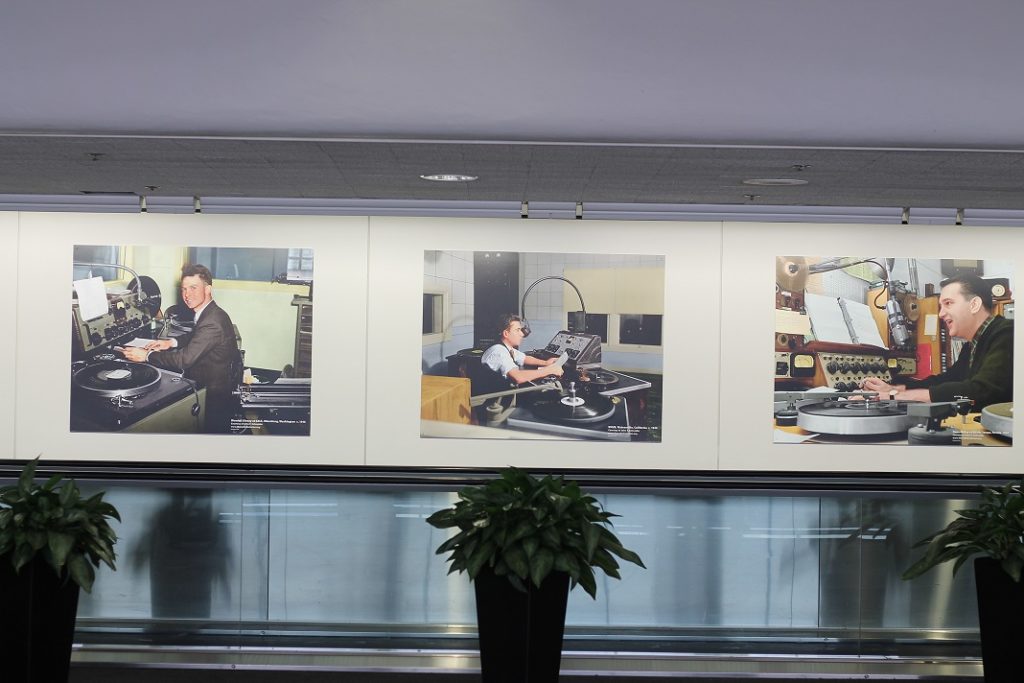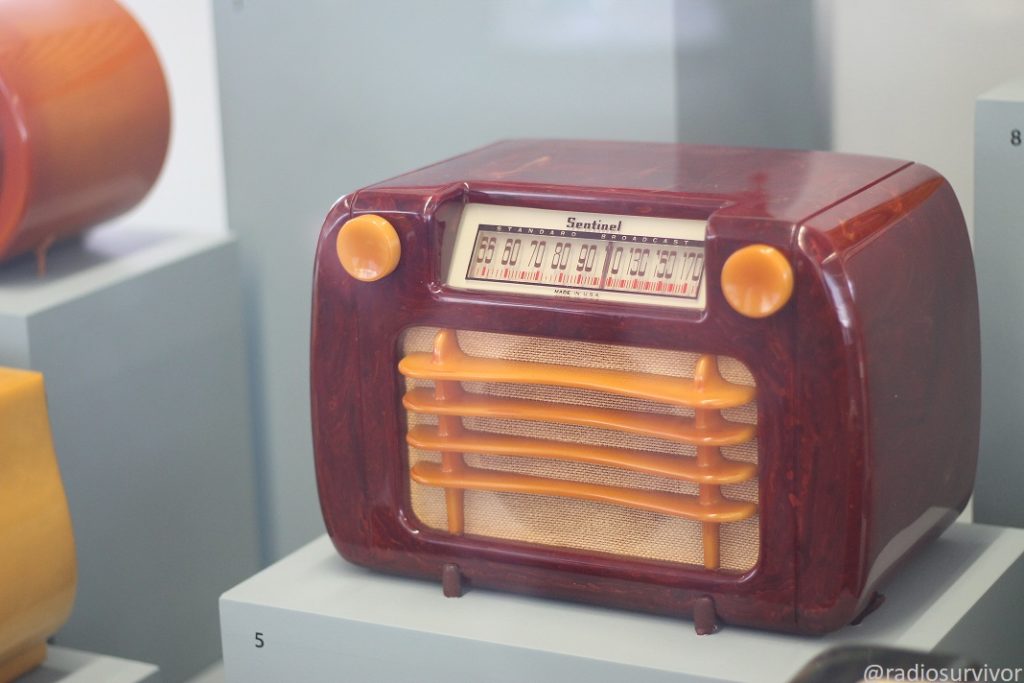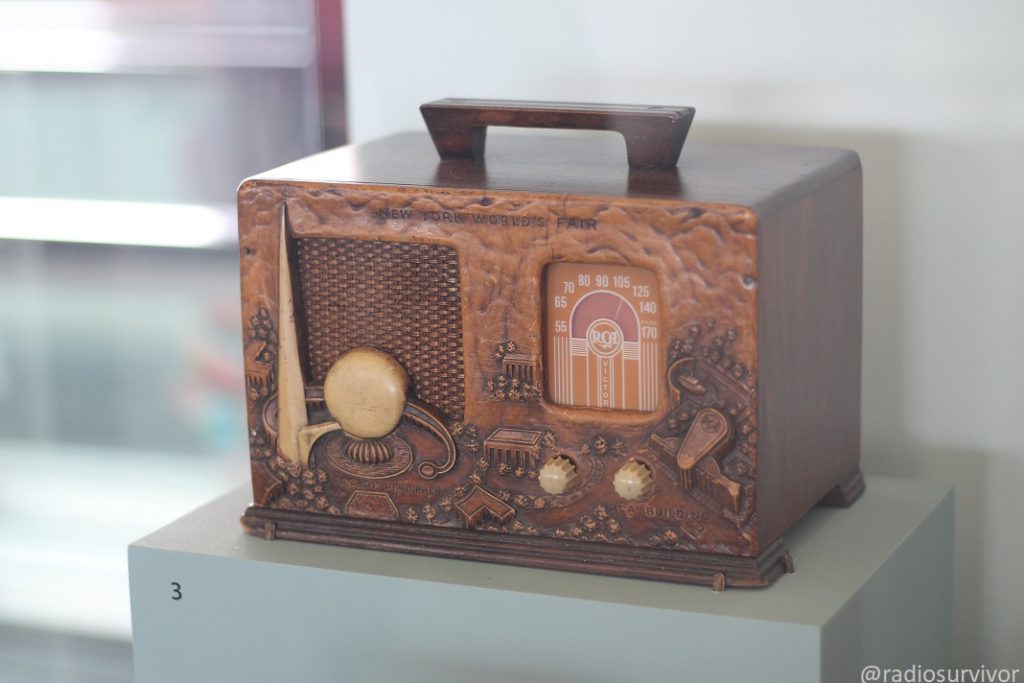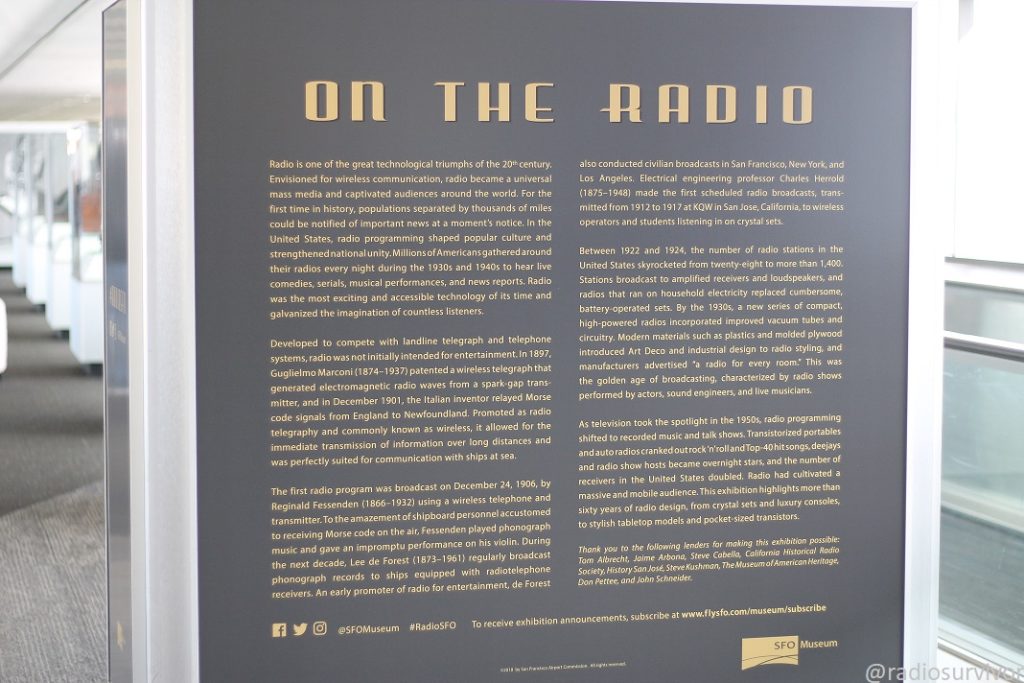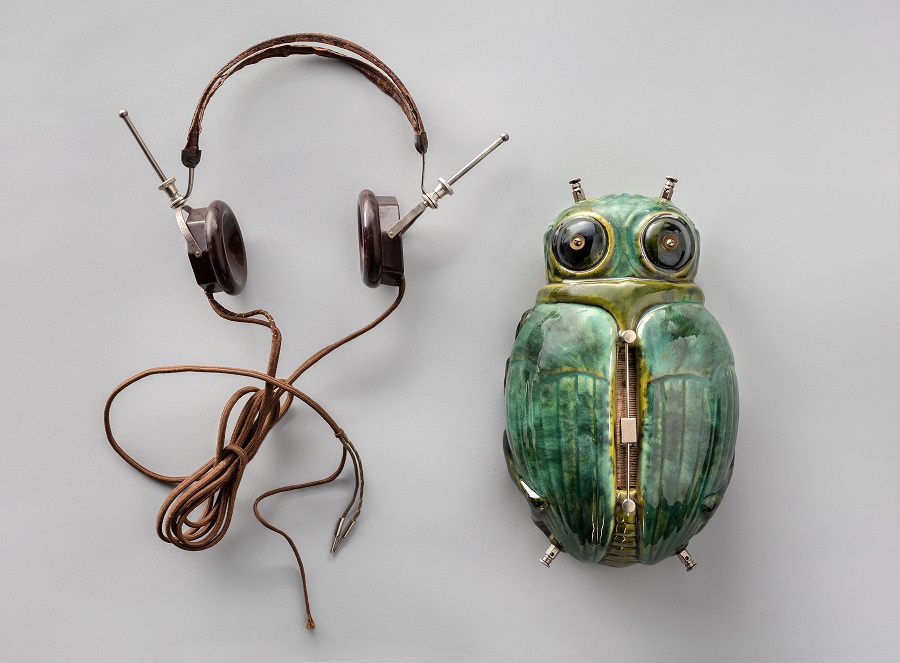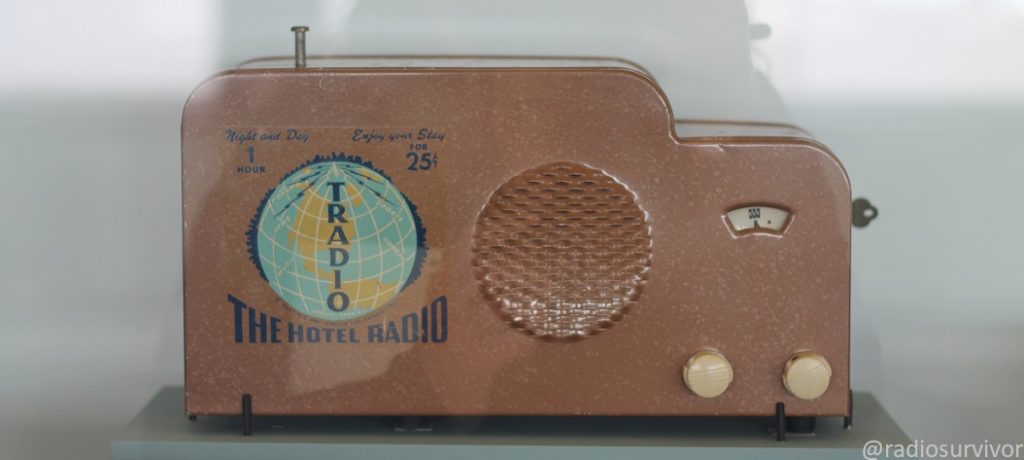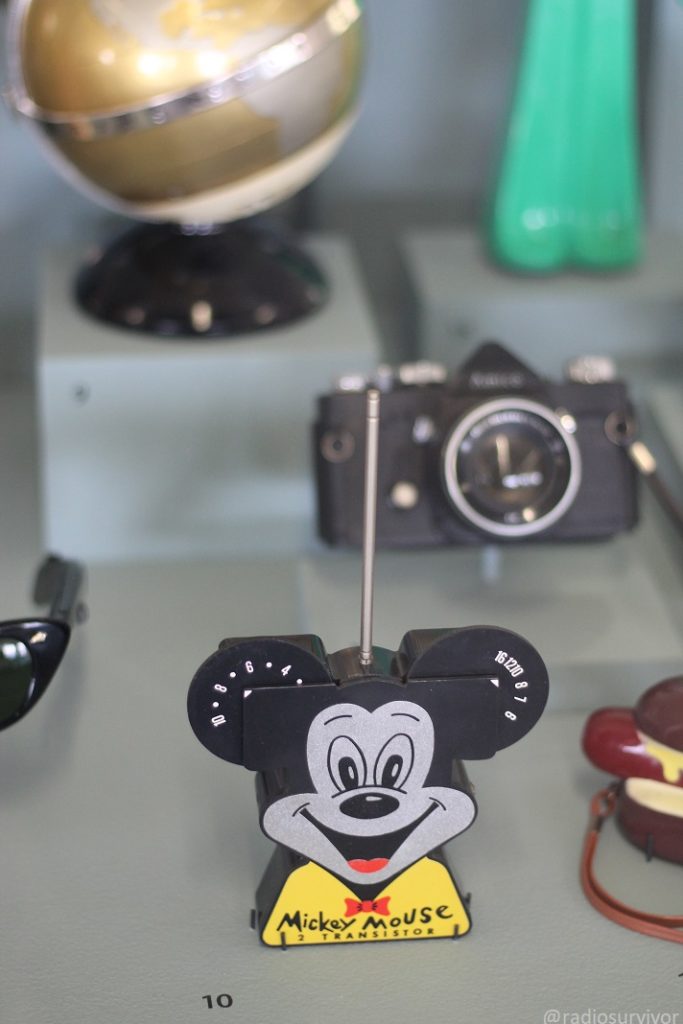Radio fans have a major reason to visit San Francisco this year: the SFO Museum just debuted the massive “On the Radio” exhibit in Terminal 3 of the San Francisco International Airport (SFO). Until September 30, 2018, travelers can feast their eyes on 27 cases full of historical items related to radio’s past, ranging from 1920s crystal radios to 1970s novelty radios.
Of particular interest to radio historians, “On the Radio,” features around 120 radios in addition to photographs, artwork from vintage radio magazine covers, advertisements, popular culture artifacts, microphones, vacuum tubes, and more. Accompanied by SFO Museum’s Assistant Curator of Exhibitions Daniel Calderon, I spent more than 90 minutes touring through the extensive exhibit; while most of the other Monday morning passersby zipped through on their way to and from flights. During my visit, a number of passengers perused the main part of the installation, reading accompanying text and chatting with friends and family members about the objects on display. Others pointed out the radio photographs and magazine covers while riding on one of the two moving walkways that bookend “On the Radio.”
My tour of “On the Radio” amazed me on several levels. It’s one of the most extensive radio exhibits that I’ve ever witnessed and certainly the largest that I’ve seen in a non-radio environment. With thematic display cases, “On the Radio” also provides an incredible overview of not only radio history, but also at the wide range of radios that have been created over the years.
Beyond that, the exhibit contextualizes radio in American popular culture in particular, with accompanying photographs portraying how real people have used radio in their everyday lives. Additionally, for design and technology fans, the exhibit draws connections between notable designers (including Charles Eames and Alexander Girard) and technical pioneers/inventors (such as Reginald Fessenden, Lee de Forest, Charles Herrold and Edwin Armstrong) and the radio landscape.
While many travelers may only have a few minutes to devote to “On the Radio,” I would encourage radio fans and historians to build in extra time during their trips through SFO in order to spend quality time with the exhibit. For departing passengers or those approaching from other terminals, I’d recommend starting near the entrance to the people movers, where you can pick up a copy of the “On the Radio” booklet (which opens up into a beautiful poster) and read an introductory panel about the exhibit.
From there, I would begin with the “Early Broadcasting” display, proceeding ahead to see the exhibits on the right side of the gallery, including “Crystal Sets.” This is where you can spy one of the star pieces of the show, the “Mystic” radio bug crystal radio from 1927. Part of Steve Kushman’s collection, this crystal radio is encased inside a fantastical glazed green ceramic bug.
I enjoyed beginning at this side of the show in order to get a look at some of the older items. One could also take a detour on the people mover heading towards Terminal 3 gates in order to see John Schneider‘s collection of colorized historic radio studio photos on the wall to one’s right, returning on the people mover heading towards the airport exit to view illustrated Radio magazine covers from the 1920s to one’s left (displayed on the back of exhibit cases). Take a second trip on the people mover towards Terminal 3, looking to your left, to see additional magazine covers.
Other displays focus on types of radios (battery sets, cathedral radios, 1930s tabletop radios, 1930s luxury radios, mid-century plywood radios, portable radios, molded plastic radios, bakelite radios, mirrored radios, transistor radios, Remler radios, Catalin radios, coin-operated radios), programming (music on the radio, postwar radio and rock ‘n roll, radio shows, radio’s dramatic voice), technology (FM radio, tube technology, patent licensing), the radio audience, novelty radios (including a radio housed in sunglasses and an early lamp-shaped radio), and the 1939 New York World’s Fair and Golden Gate International Exposition.
As one would expect from this type of exhibition in San Francisco, there are a number of references to San Francisco Bay Area inventors, radio manufacturers, radio networks, radio stations, and pioneering broadcasters. The “On the Radio” exhibit points out San Jose’s important role in radio history, stating, “Electrical engineering professor Charles Herrold (1875–1948) made the first scheduled radio broadcasts, transmitted from 1912 to 1917 at KQW in San Jose, California, to wireless operators and students listening in on crystal sets.” Those stopping by the exhibit can take a look at historic photos from Herrold’s station, which one could argue was the first college radio station in the San Francisco Bay Area. I was also intrigued to see a photo from the grand NBC “Radio City” studio in San Francisco (circa 1942). Now the home to tech company Reddit, the building’s original mosaic mural can still be seen today.
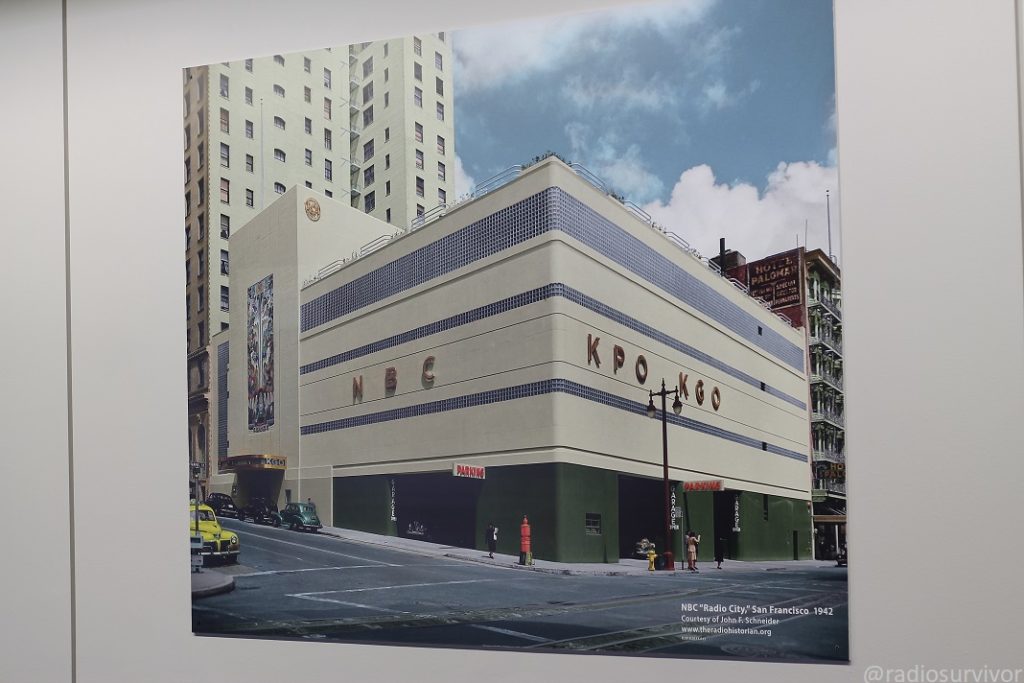
1942 Image of NBC “Radio City” Building in San Francisco from the “On the Radio” exhibit. Photo: J. Waits
Established in 1980, Museum SFO encompasses 25 galleries at the airport and is unique in that it “…was accredited by the American Alliance of Museums in 1999, becoming the first and only accredited museum to be located in an airport.” Although I’ve admired many of the museum’s exhibits over the years (from vintage typewriters to airplane-themed album cover art), I wasn’t fully aware of the extent of the SFO Museum, likely due to the rushed nature of my usual airport visits. Several galleries, including the Aviation Museum and Library (in the international terminal) are located in pre-security areas and are open to the public. At the time of my visit, there were around 18 different exhibits throughout the airport and that is in addition to more than 80 pieces of public art that is also on display.
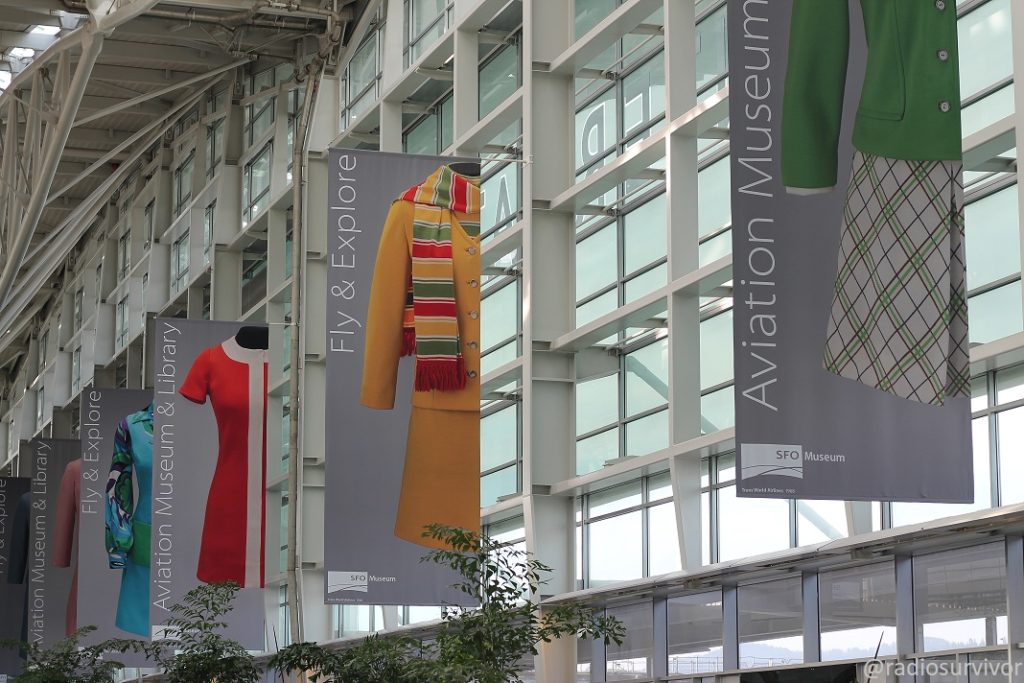
Promotional pieces for SFO Museum in the international terminal at San Francisco Airport. Photo: J. Waits
Although SFO Museum displays some of its own collections in the Aviation Museum and Library, the majority of the items on view in airport galleries are on loan from collectors and other museums. “On the Radio” includes materials from numerous private collectors as well as from the California Historical Radio Society, History San Jose, and the Museum of American Heritage (which is going to have a series of workshops on how to build a crystal radio, by the way!).
With around 50 million travelers coming through SFO every year, it’s staggering to think about the potential audience for the museum’s exhibits and it delights me to imagine the vast number of people who will catch at least a glimpse of radio history during the run of “On the Radio.”

